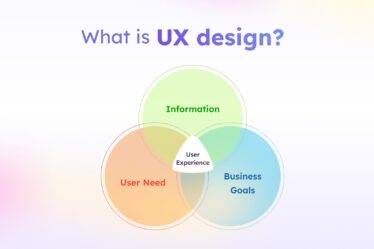
You must have felt utterly stuck somewhere between a brilliant Houston logo design vision and technical hurdles that prevent its realization completely.
As graphic designers we’ve all had moments where our creative dreams spectacularly collide with harsh coding actuality suddenly. But what if I revealed a hidden pathway that bridges these vastly different worlds?
Enter Webflow – the disrupter that’s revolutionizing web design. Imagine this: you design in the browser, your creation comes to life in seconds, and you don’t have to describe your vision to a developer or a web design company in Houston in clunky specs. It’s having super powers for your design process!
In this blog, we’ll discuss the impact of webflow development services on the graphic design landscape, especially for Houston businesses seeking standout digital presence. If you are a web designer, you will discover why Webflow will be a crucial element in your toolkit if you’re somewhat familiar
What is Webflow?
Webflow is the one friend you have when you’re abroad who speaks both your languages – it translates design and code so you don’t have to. Essentially, Webflow is a visual web design platform that allows you to build professional, responsive websites without ever having to write a single line of code.
Think of it as a design playground where your visual creativity directly shapes the final product. Unlike traditional tools, Webflow basically melds design and development into one world letting you build everything from simple landing pages to pretty complex database-driven websites, all while seeing exactly what your users will experience.
Webflow vs. Traditional Web Development
The traditional web design process has always involved a fundamental disconnect between creative vision and technical implementation. This gap creates friction, delays, and often, compromise.
So, let’s look at how Webflow differs from traditional methods of web design and development:
Traditional Web Development Webflow Development
Traditional Web Development
Webflow Development
Design mockups must be translated into code
Design directly in the browser with visual interface
Requires separate designer and developer roles
One person can handle both design and development
Changes require coding knowledge and often developer assistance
Make changes visually with instant feedback
Lengthy development cycles with back-and-forth
Significantly faster production timeline
Code-heavy process with HTML, CSS, JavaScript knowledge needed
Visual interface abstracts away complex coding
Limited design flexibility once development begins
Design changes possible at any stage
Separate tools for design (Photoshop, Sketch) and development
All-in-one platform for design and development
Advantages of Using Webflow for Designers and Developers
Let’s examine how Webflow alters this relationship fundamentally, creating new possibilities for designers and developers.
Therefore, the advantages of using webflow are as follows:
● Freedom to experiment with designs without coding constraints
● Instant visual feedback lets you perfect every pixel
● Significantly reduced development time and cost
● Built-in responsive design tools ensure mobile compatibility
● Clean, export-ready code that meets industry standards
● Direct publishing and hosting simplifies the launch process
● Designer maintains control throughout the entire project lifecycle
● Easy client handoff with Editor and CMS capabilities
How Webflow Empowers Graphic Designers
Webflow doesn’t just make web design more accessible—it fundamentally transforms what graphic designers can accomplish without technical assistance. By removing coding barriers, it unleashes creative potential that was previously locked behind development constraints.
Let’s explore the specific ways Webflow amplifies design possibilities.
● Visual Design Flexibility
Webflow positions graphic designers in the driver’s seat of pixel-perfect creation without the coding hurdles. Imagine adjusting every margin padding and color value with meticulous precision seeing exactly how it appears under various conditions.
Unlike other tools that hold you back from expressing yourself, the visual editor in Webflow lets you craft your exact vision—from tweaking typography to complex layouts previously requiring developer assistance. It’s having Photoshop power within your website builder, where exactly what you see is exactly what you get.
● Real-Time Design Feedback
Remember the endless email chains with developers to adjust that button 3 pixels to the right? With Webflow, those days are history. As you design, you’re simultaneously building the actual website, seeing changes instantly in the browser.
This instant feedback loop transforms the way you work, allowing you to quickly iterate and test without having to wait on code implementation.
It’s like having a developer working over your shoulder, putting every design decision you make into action in a moment—except that developer is you, with the user-friendly interface of Webflow.
● Design without Limits
Webflow breaks the chains that once restricted graphic designers to static mockups. Want to create that perfect scroll-triggered animation? Or perhaps a complex hover state that responds to user interaction? No problem.
Webflow’s powerful animation and interaction tools let you animate designs without ever writing a line of code.
It frees your imagination so you can focus on creating memorable user experiences rather than being held back by technical constraints or having to describe your vision to developers.
Seamless Integration of Design and Development
The traditional handoff between developers and designers has always been a point of contention, tending to result in compromised vision and protracted timeframes.
Webflow fills this gap by merging these formerly separate worlds into one workflow that maintains creative intent with technical perfection.
No Need for Handoff
Webflow eliminates the traditional design-to-development handoff that often leads to lost details and creative compromises. Instead of creating mockups and hoping developers interpret them correctly, designers directly build the functional website.
Your creative intent is retained in this seamless flow, and project timelines get slashed significantly. Your pixel-perfect designs transform into pixel-perfect websites without the translation issues that usually happen when you transition from design tools to code.
Built-In CMS for Content Management
Webflow’s Content Management System is a designer’s secret weapon for maintaining visual consistency across dynamic content. You create the design system once, then the CMS applies your styling rules automatically as content changes.
This powerful feature lets you focus on creating beautiful templates while ensuring clients can update content without breaking your design. It’s like having a design system guardian that maintains your visual standards even as website content evolves over time.
Customizability and Interactivity
Bring static designs to life as memorable moments with the powerful interaction capabilities of Webflow. You can craft engaging interactive elements responding directly to user behavior without any code such as hover animations and complex scroll triggered sequences.
Such thoughtful interaction vastly enhances visual appeal and notably boosts user experience by providing intelligent interfaces that aid navigation.
Responsive Design Made Easy
Creating truly responsive websites used to require extensive coding knowledge and testing across multiple devices. With Webflow, responsive design becomes an intuitive visual process rather than a technical challenge. This accessibility opens new doors for designers to ensure their work looks perfect on every screen.
Webflow’s Mobile-First Approach
Webflow embraces the modern mobile-first philosophy, letting you design for smartphones first, then scale up to larger screens. This approach ensures your sites load quickly and look stunning on the devices most people use today.
Unlike traditional tools that treat mobile as an afterthought, Webflow’s breakpoint system lets you visually craft each screen size experience with precision.
You can see exactly how your design transforms across devices in real-time, catching potential issues before they reach your users – no more surprises when viewing on different screens!
Designing for All Devices
Gone are the days when designing for multiple devices meant triple the work. Webflow’s responsive design engine lets you create once and optimize everywhere.
With intuitive breakpoint controls, you can fine-tune how elements stack, resize, hide, or transform as screen sizes change.
This flexibility means your creative vision remains intact across devices while ensuring optimal usability. The best part? You’re building the actual responsive behavior, not just creating static mockups and hoping developers implement them correctly. It’s responsive design without compromise.
Case Studies: How Webflow Has Transformed Graphic Design Projects
Let’s examine actual projects to see concrete examples of how designers are leveraging Webflow to overcome traditional limitations:
Real-World Examples
Take Designlab’s portfolio site, where complex image galleries and hover states that would require custom coding elsewhere were implemented in days, not weeks.
Then there’s Houston’s own Wellborn Creative, who cut client revision cycles in half by making real-time adjustments during client meetings.
These designers aren’t just building websites; they’re crafting memorable digital experiences without the traditional technical barriers, resulting in happier clients and more innovative work.
Benefits of Using Webflow for Houston-Based Businesses
Houston’s diverse business landscape presents unique challenges and opportunities for effective web design.
Let’s look at the advantages Webflow offers for Houston businesses looking to strengthen their online identity.
Local Relevance: Houston Logo Design & Web Design Services
In Houston’s diverse business landscape – from energy giants to innovative startups – standing out visually isn’t just nice, it’s necessary.
Local businesses partnering with Houston-based Webflow specialists gain the advantage of regionally-informed design that resonates with local audiences.
Your Houston-centric branding elements seamlessly translate from logo to fully-functioning website without the traditional design-development disconnect.
This unified approach is particularly valuable in competitive Houston markets like healthcare, real estate, and energy, where distinctive digital presence directly impacts conversion rates and brand perception among increasingly discerning local consumers.
Choosing the Right Web Design Company in Houston
Let’s explore how to identify a Webflow partner that can truly elevate your digital presence.
Finding the Right Expertise
Partnering with the right Webflow expert in Houston can make or break your digital presence. Look beyond flashy portfolios to agencies that demonstrate both technical Webflow proficiency and strong graphic design fundamentals.
The sweet spot? Companies where designers build directly in Webflow rather than outsourcing development. Ask potential partners about their Webflow certification status and request walkthroughs of previous projects.
Pay special attention to how they handle responsive design challenges and complex interactions – these reveal their true expertise level. Remember, the best Houston Webflow partners will speak both design and technical languages fluently.
Key Factors to Consider
1. Portfolio:
Examine their live Webflow projects carefully. Look for design variety, attention to detail, and how they’ve solved unique business challenges through thoughtful visual solutions that actually function in the real world.
2. Webflow Experience:
Verify their Webflow certification and years working with the platform. Experienced partners will navigate Webflow’s capabilities efficiently, saving you time and money while maximizing creative potential.
3. Understanding of Design Principles:
Great Webflow partners balance aesthetic appeal with usability. Their work should demonstrate strong typography, color theory, and layout skills while maintaining intuitive user experiences across all designs.
4. Local Market Knowledge:
Houston-savvy designers understand local industry nuances and regional preferences. This insight helps create websites that connect authentically with Houston audiences while standing out in your specific market.
Conclusion
Webflow has actually bridged the divide between web design and web development, providing an unbroken interface where function and aesthetics converge without compromise. With the power to create directly what is conceived, Webflow does away with technical constraints and translation issues that previously held digital design captive. This revolution isn’t just about making websites easier to build—it’s about elevating what’s possible in digital design altogether.


